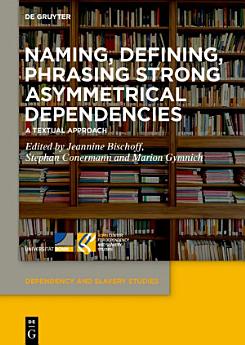Naming, Defining, Phrasing Strong Asymmetrical Dependencies: A Textual Approach
Jeannine Bischoff · Stephan Conermann · Marion Gymnich
07.2023 г. · Dependency and Slavery Studies Книга 8 · Walter de Gruyter GmbH & Co KG
Електронна книга
319
Страници
reportОценките и отзивите не са потвърдени Научете повече
Всичко за тази електронна книга
An examination of the terms used in specific historical contexts to refer to those people in a society who can be categorized as being in a position of ‘strong asymmetrical dependency’ (including slavery) provides insights into the social categories and distinctions that informed asymmetrical social interactions. In a similar vein, an analysis of historical narratives that either justify or challenge dependency is conducive to revealing how dependency may be embedded in (historical) discourses and ways of thinking. The eleven contributions in the volume approach these issues from various disciplinary vantage points, including theology, global history, Ottoman history, literary studies, and legal history. The authors address a wide range of different textual sources and historical contexts – from medieval Scandinavia and the Fatimid Empire to the history of abolition in Martinique and human rights violations in contemporary society. While the authors contribute innovative insights to ongoing discussions within their disciplines, the articles were also written with a view to the endeavor of furthering Dependency Studies as a transdisciplinary approach to the study of human societies past and present.
За автора
Jeannine Bischoff, Stephan Conermann and Marion Gymnich, University of Bonn, Germany.
Оценете тази електронна книга
Кажете ни какво мислите.
Информация за четенето
Смартфони и таблети
Инсталирайте приложението Google Play Книги за Android и iPad/iPhone. То автоматично се синхронизира с профила ви и ви позволява да четете онлайн или офлайн, където и да сте.
Лаптопи и компютри
Можете да слушате закупените от Google Play аудиокниги посредством уеб браузъра на компютъра си.
Електронни четци и други устройства
За да четете на устройства с електронно мастило, като например електронните четци от Kobo, трябва да изтеглите файл и да го прехвърлите на устройството си. Изпълнете подробните инструкции в Помощния център, за да прехвърлите файловете в поддържаните електронни четци.









